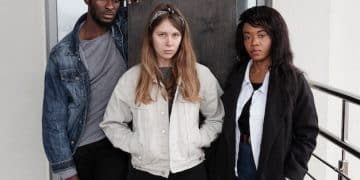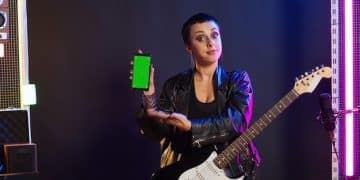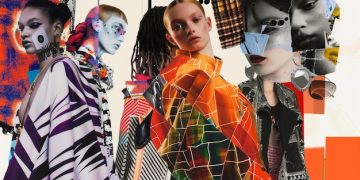US Subcultures Embrace Gender Fluidity
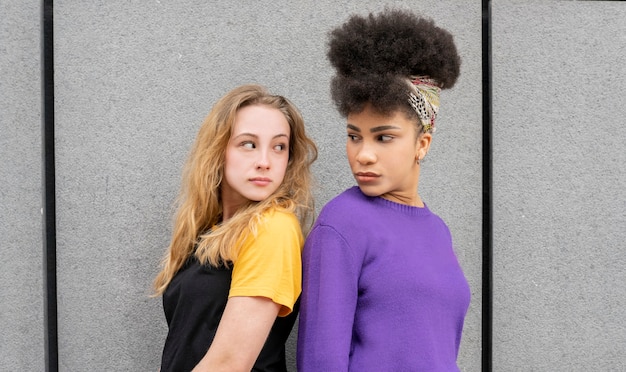
US subcultures are increasingly embracing gender fluidity, challenging traditional norms and fostering inclusive spaces where diverse identities are celebrated and affirmed, reflecting a significant societal shift toward broader understanding and acceptance.
In a rapidly evolving landscape of identity and expression, a remarkable transformation is unfolding across the United States. Beyond the Binary: How US Subcultures are Embracing Gender Fluidity and Challenging Traditional Norms explores this profound shift, delving into how various communities are redefining traditional gender paradigms and fostering environments where authenticity and diversity thrive.
The Shifting Sands of Gender Identity in US Subcultures
The concept of gender, once largely confined to a rigid binary, is experiencing a profound reconsideration within many US subcultures. This isn’t merely a niche phenomenon; it’s a vibrant, evolving movement challenging long-held societal assumptions and carving out new spaces for authentic self-expression. From urban artistic movements to online communities, the embrace of gender fluidity is indicative of a broader cultural awakening.
Subcultures often serve as crucibles for social change, pushing boundaries and exploring alternative ways of being. In the context of gender, this means moving beyond the traditional male/female dichotomy to acknowledge a spectrum of identities that may include non-binary, genderqueer, agender, bigender, and many more. This expansive view recognizes that gender is not solely determined by biological sex, but is a complex interplay of personal identity, expression, and societal perception.
Historical Context of Gender Expression in Subcultures
Historically, subcultures have always provided refuge for those who felt disenfranchised by mainstream norms. Punk, goth, and drag cultures, for instance, offered early forms of gender non-conformity, often through exaggerated aesthetics or performance. However, contemporary movements are distinguishing themselves by moving beyond performative defiance to a deeper, more systemic re-evaluation of gender itself.
- 🏳️⚧️Punk’s Androgyny: Early punk challenged gender norms through aggressive anti-establishment aesthetics, often blurring lines between masculine and feminine styles.
- 🖤Goth’s Dark Romanticism: Goth culture embraced elaborate, often dramatic attire that transcended conventional gendered clothing, focusing on theatricality and self-expression.
- 🎤Drag’s Subversion: Drag, particularly Ballroom culture, created powerful spaces for gender exploration, performance, and community support outside mainstream recognition.
The current wave builds upon these foundations but emphasizes internal identity over external performance alone. It’s about recognizing and validating internal gender experiences, allowing individuals to define their own truth rather than conforming to external expectations. This shift is empowered by increased public discourse, academic research, and the connectivity afforded by digital platforms, allowing individuals to find community and validation more easily.
This dynamic evolution underscores the strength of subcultures in shaping societal dialogue. By providing safe spaces for experimentation and affirmation, these communities are not only transforming themselves but also influencing broader perspectives on gender, identity, and inclusivity across the US. They are demonstrating that embracing diversity in gender expression enriches the collective experience and fosters a more understanding society.
Digital Realms: Online Subcultures as Safe Havens for Fluidity
The internet has become an undeniable catalyst in the proliferation and understanding of gender fluidity. Online subcultures, in particular, offer a crucial sanctuary for individuals exploring their gender identity, providing a level of anonymity and global connectivity that physical spaces often cannot match. Platforms like TikTok, Tumblr, Reddit, and Discord have blossomed into vital communities where gender non-conforming individuals can find information, support, and a sense of belonging.
These virtual spaces facilitate immediate connections with like-minded individuals, offering solace and validation to those who might feel isolated in their local communities. They allow for the sharing of personal narratives, practical advice on transitioning (socially or medically), and the collective development of new language and terminology to describe diverse gender experiences. The ability to express oneself freely, without immediate judgment or physical risk, empowers many to explore identities they might otherwise suppress.
The Rise of “Gender Affirming” Online Spaces
Many online communities are explicitly designed to be gender-affirming, meaning they prioritize respect, empathy, and support for all gender identities. These spaces often have strict moderation policies to prevent harassment and discrimination, creating environments where individuals feel safe enough to be vulnerable and authentic.
- 💬Discord Servers: Private servers dedicated to non-binary or trans communities provide real-time chat, voice channels, and shared resources for mutual support.
- 📸TikTok & Instagram: Visual platforms allow for sharing gender expression through fashion, makeup, and personal stories, inspiring others and normalizing diverse appearances.
- ✍️Tumblr & Reddit Forums: These offer platforms for longer-form discussions, sharing personal essays, educational resources, and question-and-answer sessions on gender-related topics.
The shared experience of navigating societal expectations and personal journeys builds strong bonds within these digital communities. For many, these online interactions are their first exposure to a wider understanding of gender beyond the binary, providing affirmation that their feelings and experiences are valid and shared by others. This collective affirmation is a powerful antidote to the isolation often felt by gender non-conforming individuals in more traditional settings.
While the internet offers numerous advantages, it’s also true that these spaces can have their own complexities, including the potential for misinformation or echo chambers. However, for a significant portion of the population exploring gender fluidity, online subcultures have become indispensable tools for self-discovery and community building, bridging geographical divides and fostering a new era of understanding and acceptance.
Fashion and Aesthetics as Tools for Gender Expression
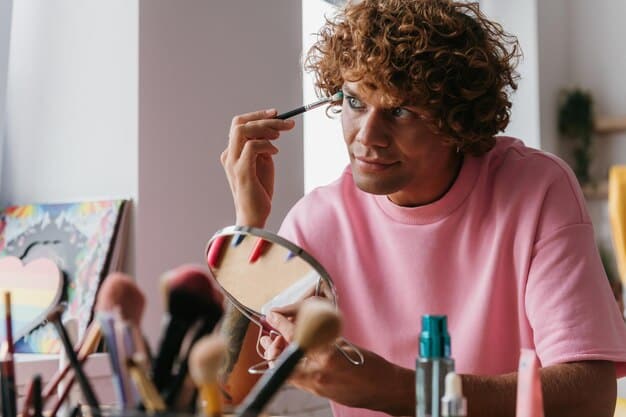
Fashion and aesthetics have always been powerful vehicles for self-expression, but within US subcultures embracing gender fluidity, they have been elevated to an art form and a political statement. Moving beyond prescriptive clothing norms, these subcultures utilize style, makeup, hair, and body modification to manifest internal gender identity, often creating looks that intentionally defy traditional associations with masculinity or femininity.
This embrace of fluid aesthetics signifies a rebellion against the marketing and social pressures that traditionally dictate what “men” and “women” should wear. Instead, individuals are curated wardrobes and appearances that resonate with their authentic selves, blending elements from traditionally opposing gender styles or creating entirely new visual languages. Gender-neutral clothing lines, once a niche concept, are becoming more prevalent, driven by this growing demand for versatile and inclusive fashion.
Deconstructing Traditional Wardrobes
The act of dressing becomes a conscious, deliberative process of alignment between internal identity and external presentation. This often involves deconstructing traditional wardrobes, liberating items from their gendered associations, and recombining them in new ways. Think of men wearing skirts or dresses, women sporting traditionally masculine cuts, or individuals adopting styles that make no immediate reference to a binary gender.
The shift also impacts the beauty industry, with a rising demand for gender-neutral makeup and skincare products. Campaigns by beauty brands are increasingly featuring models of varied gender identities, further normalizing diverse expressions. Haircuts, once sharply divided into “men’s” and “women’s” styles, are now viewed through a more expansive lens, with individuals opting for styles that feel right, regardless of conventional gender categorizations.
- 👗Clothing Liberation: Individuals embrace garments historically associated with other genders, like men in skirts or women in tailored suits, redefining what is “appropriate.”
- 💄Makeup as Art: Makeup is used as a tool for artistic expression and identity affirmation, moving beyond traditional cosmetic roles to explore bold, unconventional looks.
- 💇♀️Fluid Haircuts: Hairstyles often disregard conventional gendered norms, opting for cuts that reflect personal aesthetic and comfort rather than binary expectations.
These aesthetic choices are not merely superficial; they are integral to affirming and communicating identity. For many, the ability to express their gender fluidly through their appearance is a vital component of their well-being and sense of self. It fosters a visual dialogue about gender, pushing mainstream society to reconsider its ingrained perceptions and embrace a richer, more diverse spectrum of human expression.
By transforming fashion and aesthetics into a canvas for gender exploration, subcultures are actively dismantling rigid norms and demonstrating the boundless possibilities of self-expression. They are proving that true style comes from authenticity, not conformity.
Language and Pronouns: Evolving Communication Norms
As understandings of gender evolve, so too does the language we use to describe ourselves and others. Within US subcultures embracing gender fluidity, there is a clear and powerful movement toward inclusive language, particularly concerning pronouns. The shift from an exclusively binary “he/him” or “she/her” to a broader range of options, most notably “they/them” as a singular pronoun, reflects a deep commitment to acknowledging and respecting diverse gender identities.
This linguistic evolution is not just about political correctness; it’s about validating individual existence. Using someone’s correct pronouns is a fundamental act of respect and recognition. Misgendering, whether intentional or accidental, can be deeply distressing and invalidate a person’s identity. Subcultures have been at the forefront of normalizing pronoun usage, making it a routine part of introductions and online profiles.
Normalizing Pronoun Sharing and Neopronouns
Many subcultures encourage or even require individuals to state their pronouns when meeting new people or joining online communities. This practice removes the assumption of gender and creates a more welcoming environment for everyone, especially those whose gender identities do not align with traditional expectations. This simple act signifies an inclusive space where one’s identity is recognized and valued from the outset.
Beyond traditional pronouns, there is also a growing recognition and use of “neopronouns,” such as “xe/xem,” “ze/zir,” or “fae/faer.” While less common in mainstream discourse, these pronouns are gaining traction within gender-fluid subcultures as individuals seek language that precisely reflects their unique experiences and identities. This embrace of neopronouns highlights the ongoing evolution of language to meet the nuances of human experience.
- 🗣️Pronoun Sharing: Encouraging or mandating the sharing of pronouns upon introduction to ensure respectful communication and identity affirmation.
- 🌐“They/Them” Normalization: Increased use of singular “they/them” pronouns to refer to individuals who identify as non-binary or genderqueer.
- 🆕Neopronoun Recognition: Acceptance and usage of newer pronoun sets like “xe/xem” or “ze/zir” to encompass a broader spectrum of gender identities.
The effort to adapt language is a continuous process, requiring vigilance and empathy. It involves actively listening to how people identify themselves and making a conscious effort to use the language they prefer. While errors may occur, the commitment to learning and adjusting is paramount. This linguistic flexibility within subcultures is crucial for fostering truly inclusive spaces and promoting a deeper understanding of gender beyond traditional bounds, ultimately enriching societal dialogue.
By championing inclusive language, these communities are demonstrating that respect for identity begins with how we speak and interact with one another. This linguistic evolution is setting new standards for polite and considerate communication in a diverse world.
Art, Performance, and Activism: Expressing Fluidity Through Creativity
Art and performance have long served as powerful mediums for expressing and challenging societal norms, and within US subcultures that embrace gender fluidity, they have become vital tools for exploration, affirmation, and activism. From visual arts to music, drag, and spoken word, creative expression provides a platform for individuals to articulate their experiences, build community, and advocate for greater understanding and acceptance.
Performance art, in particular, allows for the tangible representation of fluid identities, often breaking down the fourth wall to directly engage audiences in a dialogue about gender. Drag, for example, once primarily confined to gay clubs, has gained wider recognition for its subversive power, showcasing the performative nature of gender itself. Contemporary drag acts often explore non-binary identities and challenge traditional notions of masculinity and femininity in new and profound ways.
The Intersection of Art, Identity, and Resistance
Visual arts, including painting, sculpture, and digital media, offer artists a means to explore the complexities of gender identity through abstract or symbolic representation. Photography and film provide unique opportunities to capture the lived experiences of gender-fluid individuals, bringing their narratives to a broader public. These artistic endeavors serve not only as personal therapy but also as acts of resistance against a binary-dominated world.
- 🎭Drag & Performance: Utilizing drag and other forms of performance art to challenge gender norms, explore fluid identities, and engage audiences in critical dialogue.
- 🎨Visual Arts: Artists use painting, sculpture, and digital media to creatively express and explore the nuanced spectrum of gender identity.
- 📝Poetry & Spoken Word: Providing platforms for personal narratives and reflections on gender fluidity through compelling storytelling and poetic expression.
Beyond individual expression, art and performance also serve as powerful tools for activism. Protest art, community murals, and public installations raise awareness, spark conversations, and mobilize support for gender equality and LGBTQ+ rights. Music, too, plays a crucial role, with artists writing songs that resonate with gender-fluid experiences, offering anthems of solidarity and empowerment.
These creative outlets foster a sense of belonging and validation for participants, while simultaneously educating and inspiring others. By translating complex concepts of gender fluidity into accessible and engaging forms, artists and performers contribute significantly to fostering a more nuanced understanding of identity in society. Their work ensures that the lived realities of gender-fluid individuals are not only seen but celebrated and understood.
Through their various artistic expressions, these subcultures demonstrate the enduring power of creativity to both reflect and reshape societal perspectives on gender, pushing the boundaries of acceptance and understanding.
Challenging Mainstream Institutions: Education, Healthcare, and Beyond
The embrace of gender fluidity within subcultures is not an isolated phenomenon; it’s a dynamic force that is increasingly impacting mainstream institutions across the US. From educational systems to healthcare providers and corporate environments, traditional structures are being compelled to adapt and become more inclusive of diverse gender identities. This shift signifies a gradual, yet significant, movement beyond the confines of a binary worldview in established settings.
In education, universities and even some high schools are revising their policies to be more gender-inclusive, including the adoption of gender-neutral bathrooms, updated registration forms with non-binary gender options, and training for staff on respectful pronoun usage. Curricula are also slowly beginning to incorporate discussions on gender identity, moving beyond a purely biological understanding to encompass social and psychological dimensions.
Healthcare and Legal Reforms
The healthcare system, historically rigid in its approach to gender, is undergoing a transformation. More healthcare providers are specializing in gender-affirming care, offering services from hormone therapy to surgical procedures for transgender and non-binary individuals. There’s also a growing recognition of the need for mental health support that is specifically tailored to the unique challenges faced by gender-fluid individuals.
Legal frameworks are also catching up, albeit slowly. Many states now allow for gender markers on identification documents to reflect non-binary identities, and protections against discrimination based on gender identity are becoming more widespread. These legal shifts, often spurred by advocacy from within gender
-fluid communities, underscore the growing societal recognition of these identities.
- 🏫Educational Inclusivity: Implementation of gender-neutral bathrooms, updated registration forms, and pronoun training in schools and universities.
- 🏥Evolving Healthcare: Expansion of gender-affirming care, including hormone therapy, surgeries, and specialized mental health support for diverse gender identities.
- ⚖️Legal Modernization: Introduction of policies allowing non-binary gender markers on IDs and strengthened anti-discrimination laws based on gender identity.
While progress is being made, significant challenges remain. Resistance from more conservative elements of society, funding limitations, and a lack of widespread education continue to hinder full institutional acceptance. However, the consistent push from subcultures, coupled with increasing public awareness, is steadily chipping away at these barriers. The ultimate goal is to create a society where all individuals, regardless of their gender identity, are afforded the same rights, respect, and opportunities within all institutions.
The ongoing pressure from gender-fluid subcultures is undeniably a driving force behind these institutional shifts, demonstrating their profound and lasting impact on the broader societal fabric of the US. Their advocacy ensures that the conversation continues to move forward, pushing for greater equity and understanding.
| Key Point | Brief Description |
|---|---|
| 🌈 Fluidity & Norms | US subcultures actively challenge binary gender norms, fostering diversity. |
| 💻 Online Sanctuaries | Digital platforms provide safe, affirming spaces for gender exploration. |
| 🗣️ Evolving Language | Pronoun usage and neopronouns reflect growing respect for identity. |
| 🎨 Creative Expression | Art, fashion, and performance are vital tools for identity and activism. |
Frequently Asked Questions
▼
Gender fluidity refers to the idea that gender is not fixed or strictly binary (male/female) but can change over time or vary in expression. In subcultures, it signifies an open embrace of diverse gender identities and expressions beyond traditional norms, fostering environments where people can explore and affirm their authentic selves without rigid categories.
▼
Online platforms like TikTok, Tumblr, and Discord provide safe, anonymous spaces for individuals to explore gender identity, connect with others, and find support. They facilitate sharing personal stories, accessing resources, and building communities for those who might feel isolated offline. This digital connectivity accelerates understanding and acceptance of diverse gender expressions.
▼
Using correct pronouns is a fundamental act of respect and validation. It recognizes an individual’s self-identified gender and affirms their identity. Misgendering can be deeply invalidating and harmful. Embracing diverse pronoun usage, including “they/them” and neopronouns, creates an inclusive environment where everyone feels seen and valued for who they are.
▼
Fashion and aesthetics in gender-fluid subcultures are used to deliberately defy traditional gender associations. Individuals curate styles, makeup, and hair that reflect their internal identity rather than conforming to binary expectations. This often involves blending traditionally masculine and feminine elements, or creating entirely new forms of expression, empowering self-affirmation and challenging mainstream perceptions.
▼
Gender-fluid subcultures are pushing mainstream US institutions, including education, healthcare, and legal systems, to become more inclusive. This includes promoting gender-neutral facilities, expanding gender-affirming healthcare services, and advocating for legal protections. While challenges remain, their persistent advocacy drives significant shifts towards greater understanding, acceptance, and equity for diverse gender identities across society.
Conclusion
The journey Beyond the Binary: How US Subcultures are Embracing Gender Fluidity and Challenging Traditional Norms reveals a vibrant tapestry of evolving identities and expressions. These dynamic communities, whether online or offline, through fashion, art, or language, are not just adapting to a changing world; they are actively shaping it, pushing the boundaries of what is considered “normal” and fostering a profound sense of inclusion. Their influence extends far beyond their immediate circles, slowly but surely transforming mainstream institutions and fostering a more equitable and understanding society for all. The ongoing redefinition of gender within these subcultures stands as a testament to humanity’s capacity for evolution, creativity, and boundless self-discovery.

